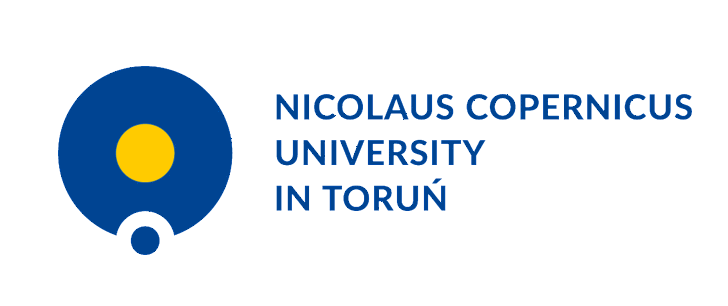
MOSAIC
Programme: HORYZONT2020, MSCA-RISE (Marie Skłodowska-Curie Actions, Research and Innovation Staff Exchange)
Title of the project:
MOSAIC: Modalities in Substructural Logics: Theory, Methods and Applications
Duration: 09/2021-08/2025
Participants: 29 scientific centers from all over the world: 18 partners from European countries (Poland, Italy, France, Austria, Spain, Czech Republic, Switzerland, the Netherlands, and Great Britain) and 11 partners from outside Europe (Argentina, Brazil, South Africa, USA, and Australia).
Local coordinator: dr hab. Rafał Gruszczyński, prof. UMK
NCU’s unit participating in the project: Department of Logic (Institute of Philosophy, Faculty of Philosophy and Social Sciences)
Project’s content and objectives:
Modal logics are a family of formal systems based on classical logic that aim to improve the expressive power of the latter to allow to reason about "modes of truth." The project puts forward a systematic study of substructural modal logics, understood as modal logics that base their modal operators upon substructural logics - deductive systems weaker than classical logic.
The project aims are twofold: (1) Putting forward a comprehensive and unifying logico-mathematical study of substructural modal logics, that is, substructural logics with modalities. (2) Exploring the application of substructural modal logics outside the bounds of mathematical logic, specifically in knowledge representation, legal reasoning, data privacy and security, and logical analysis of natural language.
The grant funds are designated for research stays in universities of non-EU countries in the case of researchers employed in the centers within the European Union and similarly for visits of non-EU researchers to European Union centers. In addition, three conferences and five workshops are planned.
https://sites.google.com/view/mosaic-rise/home?authuser=0

Ultra-stable optical oscillators from quantum coherent and entangled systems (USOQS)
Optical clocks require more stable optical oscillators to accelerate the redefinition of the SI second, bring excellent fundamental science to metrology and enable applications for innovative sensors in clock-based geodesy.
The overall objective of this project is to realise a new generation of ultra-stable optical oscillators which take advantage of quantum technologies. This implies a knowledge transfer in theoretical and experimental quantum manipulation from quantum optics and quantum computing, to the optical frequency metrology field.
While the application of quantum measurement strategies in atomic clocks and sensors via multi-particle and light-matter interactions is at the proof-of-principle stage, this project will implement and further develop state-of-the-art quantum measurement strategies on optical oscillators of metrological relevance. It will impact on metrology and sensing with cold atomic systems and optical devices, as well as in those techniques used in scalable quantum information processing and simulation.
Partner institutions:
Istituto Nazionale di Ricerca Metrologica, Italy
NPL Management Limited, United Kingdom
Observatoire de Paris, France
Physikalisch-Technische Bundesanstalt, Germany
Consiglio Nazionale delle Ricerche,Italy
Fundacio Institut de Ciencies Fotoniques, Spain
Kobenhavns Universitet, Denmark
Gottfried Wilhelm Leibniz Universität Hannover, Germany
University of Durham, United Kingdom
Uniwersytet Mikołaja Kopernika w Toruniu, Poland

E-RIHS PP
E-RIHS PP is a project devoted specifically to the preparation of E-RIHS, the European Research Infrastructure for Heritage Science (HS), one of the six new projects which entered the ESFRI Roadmap in 2016, and the only research infrastructure project in the Social and Cultural Innovation section of the Roadmap. E-RIHS will help the preservation of the World’s Heritage by enabling cutting-edge research in HS, liaising with governments and heritage institutions to promote its constant development and, finally, raising the appreciation of the large public for cultural and natural heritage and the recognition of its historic, social and economic significance. E-RIHS PP will last three years. The first two will be used to address governance, financial aspects, legal documents and logistics. This will lead to a business plan ready for application to ERIC, or to another suitable legal form, by 2019. The last year will be devoted to negotiations with stakeholders, based on the agreed instruments, further strategic planning and to start up of activities for entering the transition phase. E-RIHS will hopefully be launched as a standalone European Research Infrastructure in 2021.
IPERION CH
IPERION CH is a consortium of 24 partners from 15 countries that aims at establishing a unique European research infrastructure for restoration and conservation of Cultural Heritage. The unusualness of the project is that it offers to the institutions involved in preservation of Cultural Heritage across Europe the free access to a wide range of high-level scientific instruments, methodologies, data and tools for advanced knowledge and innovation in the field, supplemented by an hands-on training camps and doctoral schools. IPERION CH Joint Research Activities are focused on cutting-edge diagnostics for improving above mentioned access services and tools. The consortium foresees promising scientific and technological advancements that can also foster innovation potential and eventually lead to broader impact through involvement of SMEs. IPERION CH JRA address the current needs of the research community, aiming to: (a) advance techniques and instruments for non-invasive stratigraphic analyses, (b) integrate analytical techniques in new portable instruments and imaging devices, optimizing mobile diagnostics, (c) advance diagnostic techniques for efficient monitoring of deterioration and conservation treatments, (d) improve methods for analyses of organic components in historical and archaeological samples, (e) unify digital tools and protocols for storing, re‐using and sharing multi-format scientific cultural heritage data.

